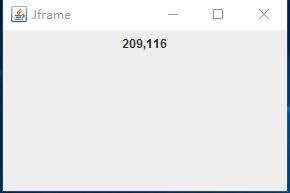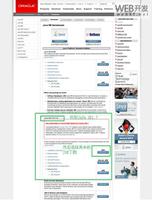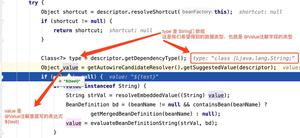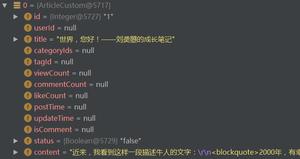Java如何在JTable组件中获取选定的单元格?
以下示例显示如何获取选定的行或选定的列,或如何选择JTable组件中的多个单元格。要侦听选择事件,我们可以JTable通过调用JTable.getSelectionModel().addListSelectionListener()方法将选择侦听器添加到组件。该方法接受实现ListSelectionListener接口的对象。
package org.nhooo.example.swing;import javax.swing.*;
import javax.swing.event.ListSelectionEvent;
import javax.swing.event.ListSelectionListener;
import javax.swing.table.AbstractTableModel;
import java.awt.*;
import java.awt.event.ActionEvent;
import java.awt.event.ActionListener;
import java.util.Arrays;
public class JTableGetSelectedCells extends JPanel {
private JTable table = null;
public JTableGetSelectedCells() {
initializePanel();
}
private void initializePanel() {
setLayout(new BorderLayout());
setPreferredSize(new Dimension(500, 200));
table = new JTable(new PremiereLeagueTableModel());
table.getColumnModel().getColumn(0).setMinWidth(150);
table.getSelectionModel().addListSelectionListener(
new RowColumnListSelectionListener());
table.setFillsViewportHeight(true);
JScrollPane pane = new JScrollPane(table);
JPanel control = new JPanel(new FlowLayout());
final JCheckBox cb1 = new JCheckBox("Row Selection");
final JCheckBox cb2 = new JCheckBox("Columns Selection");
final JCheckBox cb3 = new JCheckBox("Cells Selection");
// 更改行选择允许状态
cb1.addActionListener(new ActionListener() {
public void actionPerformed(ActionEvent e) {
table.setRowSelectionAllowed(cb1.isSelected());
table.setColumnSelectionAllowed(!cb1.isSelected());
cb2.setSelected(!cb1.isSelected());
}
});
// 更改列选择允许状态
cb2.addActionListener(new ActionListener() {
public void actionPerformed(ActionEvent e) {
table.setColumnSelectionAllowed(cb2.isSelected());
table.setRowSelectionAllowed(!cb2.isSelected());
cb1.setSelected(!cb2.isSelected());
}
});
// 启用单元格选择
cb3.addActionListener(new ActionListener() {
public void actionPerformed(ActionEvent e) {
table.setCellSelectionEnabled(cb3.isSelected());
table.setRowSelectionAllowed(cb3.isSelected());
table.setColumnSelectionAllowed(cb3.isSelected());
}
});
control.add(cb1);
control.add(cb2);
control.add(cb3);
add(pane, BorderLayout.CENTER);
add(control, BorderLayout.SOUTH);
}
private class RowColumnListSelectionListener implements ListSelectionListener {
public void valueChanged(ListSelectionEvent e) {
if (table.getRowSelectionAllowed() &&
!table.getColumnSelectionAllowed()) {
int[] rows = table.getSelectedRows();
System.out.println("Selected Rows: " + Arrays.toString(rows));
}
if (table.getColumnSelectionAllowed() &&
!table.getRowSelectionAllowed()) {
int[] cols = table.getSelectedColumns();
System.out.println("Selected Columns: " + Arrays.toString(cols));
} else if (table.getCellSelectionEnabled()) {
int selectionMode = table.getSelectionModel().getSelectionMode();
System.out.println("selectionMode = " + selectionMode);
if (selectionMode == ListSelectionModel.SINGLE_SELECTION) {
int rowIndex = table.getSelectedRow();
int colIndex = table.getSelectedColumn();
System.out.printf("Selected [Row,Column] = [%d,%d]\n", rowIndex, colIndex);
} else if (selectionMode == ListSelectionModel.SINGLE_INTERVAL_SELECTION ||
selectionMode == ListSelectionModel.MULTIPLE_INTERVAL_SELECTION) {
int rowIndexStart = table.getSelectedRow();
int rowIndexEnd = table.getSelectionModel().getMaxSelectionIndex();
int colIndexStart = table.getSelectedColumn();
int colIndexEnd = table.getColumnModel().getSelectionModel().getMaxSelectionIndex();
for (int i = rowIndexStart; i <= rowIndexEnd; i++) {
for (int j = colIndexStart; j <= colIndexEnd; j++) {
if (table.isCellSelected(i, j)) {
System.out.printf("Selected [Row,Column] = [%d,%d]\n", i, j);
}
}
}
}
}
}
}
private static void showFrame() {
JPanel panel = new JTableGetSelectedCells();
panel.setOpaque(true);
JFrame frame = new JFrame("JTable Selected Cells Demo");
frame.setDefaultCloseOperation(WindowConstants.EXIT_ON_CLOSE);
frame.setContentPane(panel);
frame.pack();
frame.setVisible(true);
}
public static void main(String[] args) {
SwingUtilities.invokeLater(new Runnable() {
public void run() {
showFrame();
}
});
}
class PremiereLeagueTableModel extends AbstractTableModel {
// TableModel的列名
private String[] columnNames = {
"TEAM", "P", "W", "D", "L", "GS", "GA", "GD", "PTS"
};
// TableModel的数据
private Object[][] data = {
{ "Liverpool", 3, 3, 0, 0, 7, 0, 7, 9 },
{ "Tottenham", 3, 3, 0, 0, 8, 2, 6, 9 },
{ "Chelsea", 3, 3, 0, 0, 8, 3, 5, 9 },
{ "Watford", 3, 3, 0, 0, 7, 2, 5, 9 },
{ "Manchester City", 3, 2, 1, 0, 9, 2, 7, 7 }
};
public int getRowCount() {
return data.length;
}
public int getColumnCount() {
return columnNames.length;
}
@Override
public String getColumnName(int column) {
return columnNames[column];
}
public Object getValueAt(int rowIndex, int columnIndex) {
return data[rowIndex][columnIndex];
}
}
}
运行程序时,将显示以下屏幕。在中选择一些单元格JTable将以ListSelectionModel.MULTIPLE_INTERVAL_SELECTION选择模式打印选定的行,选定的列或选定的行和列的某些索引。
以上是 Java如何在JTable组件中获取选定的单元格? 的全部内容, 来源链接: utcz.com/z/315881.html







